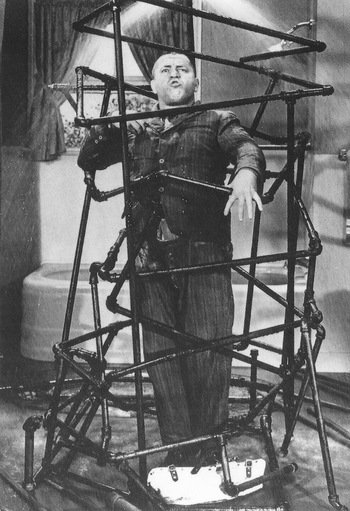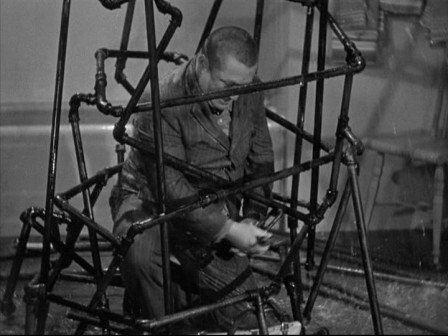Page 1 of 1
1915 Touring body assembly
Posted: Fri Jul 30, 2021 9:41 am
by ModelTDave
We've got the sheet metal and new wood for a 1915 touring car. Some of the sheet metal will have to be repaired. If you have re-wooded a touring body, I would like to know the best way to assemble the piles of parts. The rear seat has a metal frame. Pictures of "in progress" would be great. Thanks in advance.
Re: 1915 Touring body assembly
Posted: Fri Jul 30, 2021 11:32 am
by Rich Eagle
Re: 1915 Touring body assembly
Posted: Fri Jul 30, 2021 1:31 pm
by Mark Gregush
1915 through 1921, the bodies were pretty much the same. Do a search for just about any of those years will bring results.
Re: 1915 Touring body assembly
Posted: Fri Jul 30, 2021 4:07 pm
by ModelTDave
Thanks Rich, the 14 is interesting. I thought my sheet metal was a problem but it looks great compared to what you started with. Hope someone comes up with the same detailed work on a 15, because they are so different. We got some parts laid out today. Pix on webpage:
https://dunlavy.us/1915ford/body.html
Re: 1915 Touring body assembly
Posted: Fri Jul 30, 2021 4:17 pm
by perry kete
If your having trouble with assembly perhaps Curly can help!

- the_three_stooges_three_stooges_32136857_1095_1600.jpg (50.84 KiB) Viewed 2987 times

- stooges-1.jpg (32.91 KiB) Viewed 2987 times
Re: 1915 Touring body assembly
Posted: Fri Jul 30, 2021 4:34 pm
by Rich Eagle
This one shows a '15 Runabout which should fill in some of the blanks. The front would be like a touring.
http://www.mtfca.com/discus/messages/50 ... 1216047168
The last 2 photos in this show Leon Parker's 1915.
http://www.mtfca.com/discus/messages/331880/351467.html
Another Runabout.
http://www.mtfca.com/discus/messages/506218/523488.html
Some pictures of a '15 touring rear section.
http://www.mtfca.com/discus/messages/50 ... 1226978333
This has a few pictures and several links that may help.
http://www.mtfca.com/discus/messages/70 ... 1484582170
Re: 1915 Touring body assembly
Posted: Fri Jul 30, 2021 4:52 pm
by Scott_Conger
Dave
the old fellow who delighted in correcting me (justifiably) is no longer with us, so I cannot risk getting too detailed with you as he cannot point out where I am wrong.
that said, there are a few words of wisdom I can safely give:
- The frame must be SQUARE. The frame must be STRAIGHT.
- wood will be either perfect or close to correct; there will be a mix of both, and much will require fitting and there is no telling what part(s) that will need modifying until you run across them
- sheet metal will need to be hung on the bones and taken off so many times that you will lose count
certain structural repairs must be made on the metal particularly around the door openings so that the sides stop folding like tissue-paper and start acting like a structure. You will use the actual metal to correctly locate vertical ribs (pillars) so get the metal correct.
- Get the firewall and cowl correct first. Square. Vertical. Fit the radiator correctly. Attach radiator support to firewall. Fit the hood and hood clash strips. I started with the firewall and worked back, and that was OK, but failed to check hood first and did it last after everything was done...I might be the only guy to ever luck out and have these items fit when put on last.
- New steel panels are useful but rarely fit without alteration. I returned the new panels I bought and fabricated patches for everything as I felt the new panels would need at least that much work to fit. I did relent and buy the "correct" dust aprons which are very nice but have a crease from the firewall to the front which are entirely wrong and after many hours agonizing believe that they will look better left alone than reworked. Another case of "almost perfect". At least they saved me days and days of welding to salvage the old ones and at some point, being done has more value than being authentic so long as I'm not building a Stynoski Car, I'm fine with that.
now opinion which I believe to be fact:
- you have a mixture of some parts...the long front iron body brackets and steel foot risers for the floorboards are wrong and I believe only showed up in '23. My rewood/metal restore was performed on a '23 roadster but to my knowledge the risers on all earlier cars were wood as were the foundation wood that curves in from the sides to the firewall.
All wood was fabricated by me and all the patch panels and welding was, too. Lots of work. So I know what you're heading into.
Re: 1915 Touring body assembly
Posted: Fri Jul 30, 2021 7:43 pm
by John kuehn
I have restored a 1919 Roadster and the other car I did was a 1921 Touring which is pretty much like yours.
First thing you need to know the body wood and fitting it to the sheet metal can be interesting.
The reason being everything just doesn’t fall in to place when putting it together.
One of the reason being is the body wood and sheet metal is not all exactly the same. Ford used up to 5 body makers in the time period theses cars were built in.
Generally speaking they are alike but it’s in the details of the sheet metal and wood fit up that may a little different. Once I understood that things begun to get clearer! The wood kit you have may have been copied off of another body maker other than what you have. It will fit but maybe with a little fit up here and there.
I got lots of information from the late Leon Parker that helped a lot. He advised when fitting the side body wood lay out one body side and fit the curves of the wood to fit the sheet metal first. Then start installing the wood body pieces on the main wood frame rails.
Others will have done it differently I’m sure but Leon’s advice did help me.
Take your time and once you determine that your frame is straight install the firewall brackets to determine where the firewall will be. That will tell you where the body wood and the rest of the body sits on the main frame rails.
Take your time and remeasure to double check as you go.
Good luck!
Re: 1915 Touring body assembly
Posted: Fri Jul 30, 2021 8:20 pm
by perry kete
I often post smart a$$ answers but I have done re-wooding on some cars in the past. Do not expect every piece to fit like a jigsaw puzzle, it will not. You will need to fit by trial and error and cut , sand, shape the different wood pieces to fit. DO NOT GLUE pieces together. Try to fit the metal outer skin before final assembly you will need to adjust both the tin and the wood.
Re: 1915 Touring body assembly
Posted: Fri Jul 30, 2021 8:28 pm
by John kuehn
Very good advice Perry K. Over time I’ve read posts where people have gotten discouraged when putting a T body together. Once I understood about the different body makers I changed my mind about the wood kit builder I bought mine from. Both of my cars turned out fine for me.
Re: 1915 Touring body assembly
Posted: Sat Jul 31, 2021 10:53 am
by ModelTDave
Thanks Rich, Scott,John and Perry. Thank you for taking the time to respond. There are many things mentioned I will watch out for now. Every bit of the advice is worthwhile.
I'm leaning towards using the wood floorboard pieces at present. Also after welding up the tears and putting in the new metal, I'll mock it up before assembling the whole body. Thanks again. If anyone has any pictures of only the metal rear seat area, I am still interested in that. Will try report results later.
Re: 1915 Touring body assembly
Posted: Sat Jul 31, 2021 11:46 am
by Scott_Conger
Of vital importance on the sheetmetal is the shape of the door openings. I found that the rotted lower 6" of my body allowed the panel to flop uncontrollably and allowed wood framework to appear to fit when it truly did not.
I finally made a standoff that bolted through a couple upper hinge holes and then into the latch. The spanner was very carefully cut and welded in so as to mimic the correct door opening when the body panel was installed, meaning the width of the body at the latch was greater than the width of the body at the hinge, and yet the door opening at the top had to match the door (plus 1/16").
Matching backing plates were made so that the machine screws clamped the sheet metal and the panel became VERY rigid and was much easier to handle and repair. You can see from the extent of the repairs, the panel could never have kept shape without it.